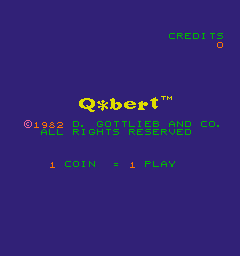Q*bert (US set 2)
Game Information
| manufacturer | Gottlieb |
| year | 1982 |
| clone of | qbert |
| other clones | myqbert qberta qbertj qberttst qbtrktst |
| genre | N/A |
| downloads | 122 |
Screenshots










Download Details
| split set | qberta.zip 13.28k |
| parent set | qbert.zip 25.33k ↗ |
| bios/device | votrsc01a.zip 590.00b |
| standalone set | qberta.7z 21.21k |
Driver Details
| source | gottlieb/gottlieb.cpp |
| status | imperfect |
| emulation | good |
| savestate | supported |
| type | sound |
| status | imperfect |
Screen Details
| display | screen |
| type | raster |
| orientation | horizontal |
| width | 256px |
| height | 240px |
| refresh | 61.42mhz |
Input Details
| player | 1 |
| type | joy |
| buttons | N/A |
| directions | 4 |
| player | 2 |
| type | joy |
| buttons | N/A |
| directions | 4 |
Chipset Details
| name | Intel 8088 |
| clock | 4.77mhz |
| name | MOS Technology 6502 |
| clock | 873.91khz |
| name | Speaker |
| clock | N/A |
| name | Gottlieb Sound/Speech rev. 1 w/SC-01-A |
| clock | N/A |
| name | MC1408 DAC |
| clock | N/A |
| name | Votrax SC-01-A |
| clock | 412.11khz |
| name | Speaker |
| clock | N/A |
| name | Samples |
| clock | N/A |
ROM Details
| name | size | crc |
|---|---|---|
| qrom_2.bin | 8.00k | b54a8ffc |
| qrom_1.bin | 8.00k | 19d924e3 |
| qrom_0.bin | 8.00k | 2e7fad1b |
| qb-snd1.bin | 2.00k | 15787c07 |
| qb-snd2.bin | 2.00k | 58437508 |
| qb-bg0.bin | 4.00k | 7a9ba824 |
| qb-bg1.bin | 4.00k | 22e5b891 |
| qb-fg3.bin | 8.00k | dd436d3a |
| qb-fg2.bin | 8.00k | f69b9483 |
| qb-fg1.bin | 8.00k | 224e8356 |
| qb-fg0.bin | 8.00k | 2f695b85 |